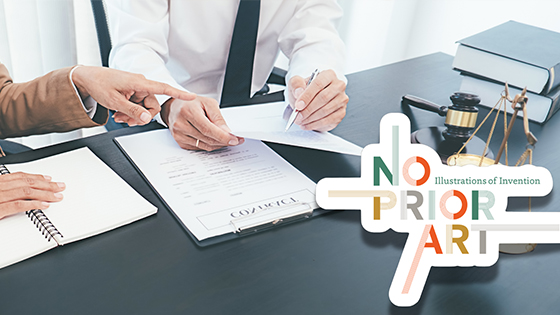What is a Patent?
- A U.S. patent is a property right granted by the Government of the United States of America to an inventor.
- A patent grants the right to exclude others from making, using, offering for sale, or selling the invention throughout the United States or importing the invention into the United States, for a limited time, in exchange for public disclosure of the invention when the patent is granted (or 18 months after filing).
- Also visit the USPTO's page, General Information Concerning Patents.
What Can Be Patented?
Utility Patents (Term: 20 years from filing date)
- Machine, Article of Manufacture, Process, Composition of Matter, Business methods (since mid-90’s court decision)
- Any new, useful improvement of the above
Design Patents (Term: 15 years from the date the patent is granted)
- Granted for a new, original and ornamental design for an article of manufacture.
- The appearance is protected.
Plant Patents (Term: 20 years from filing date)
- Granted for a new, asexually reproduced plant
What Cannot Be Patented?
- Inventions which are not new (lack novelty)
- Inventions which were "made public" more than one year prior to patent application filing date
- Inventions which are obvious variations of known technology (obvious to one familiar with the technology)
Patent Searching
Before applying for a patent it is advisable to perform what is known as a prior art search. This means that you need to check previously issued patents to see if your invention might already have been patented.
For utility patents, use the USPTO’s seven-step strategy for searching U.S. patents to locate and evaluate relevant prior art (earlier patents and published patent applications). View this useful tutorial: How to Conduct a Preliminary U.S. Patent Search: A Step by Step Strategy
For design patents, use these tools:
- Index to U.S. Patent Classification
- Manual of Classification
- Patent Public Search (How to use Patent Public Search)
Other patent searching tutorials:
- How to use Espacenet video from the European Patent Office
- Escapenet help
Our library staff is happy to show you how to do your own self-directed patent search, however we cannot
- do patent searches for you
- suggest words or classes to search
- give our opinion on whether or not an invention would be patentable
- interpret USPTO rules and procedures
- fill out forms on your behalf
- offer legal advice or answer questions of a legal nature
For legal advice, please contact a registered patent attorney or agent. More specialized questions should be directed to the USPTO customer support centers (toll-free 800-786-9199).
A comprehensive patent search would also include foreign patents and non-patent literature (newspapers, magazines, books, journals, dissertations, conference proceedings, government publications, and websites). Keep in mind that Los Angeles Public Library does not provide access to all prior art resources that are available to patent examiners.
Other Free Full Image U.S. Patent Sites
- Google patents (simple search)
- Google patents (advanced search)
- Freepatentsonline.com
- Espacenet (worldwide)
Foreign Patent Searching
- Espacenet
- Patent Lens
- Patentscope from the World Intellectual Property Organization (WIPO)
Patent Application Drafting and Prosecution
- Patent Forms
- Fees
- Manual of Patent Examining Procedure
- File a patent application online
- Patent Center Check the status of a patent application
- Guide to Filing a Non-Provisional (Utility) Patent Application
- Guide to Filing a Design Patent Application
- About the Provisional Application for a Patent
- Patent Assignment Search Contact information for some patent holders
- Official Gazette for Patents
- Avoid Scams
- Checklist for non provisional patent application
- Roadmap to Filing a Patent Application
- Patent Drafting and Prosecution Guide by Attorney Marc E. Brown.
Legal Advice
For legal advice, please contact a registered patent attorney or agent. More specialized questions should be directed to the USPTO customer support centers (toll-free 800-786-9199).- USPTO Pro Bono Website Find free legal help
- California Inventors Assistance Program For low income inventors, get matched with attorney offering pro bono help.
- PTAB Pro Bono program For independent inventors looking for free legal assistance when appearing before the Patent Trial and Appeal Board.
More Patent Information
- For guidance in writing a patent application, check out the book Patent It Yourself from Nolo Press.
- You can access the book Patent It Yourself and other titles from Nolo Press with your library card through the Los Angeles Public Library’s database Legal Information Reference Center.
- Access a free textbook, Introduction to Intellectual Property, developed by the Michelson 20MM Foundation from OpenStax.
- Online videos from the University of Michigan cover a variety of intellectual property concepts and topics.
- Inventors Forum Local inventors group
- Historical patents from DATAMP
- Historical, Regional and Specialized Patent and Trademark Research from PTRCA
- USPTO for young innovators

